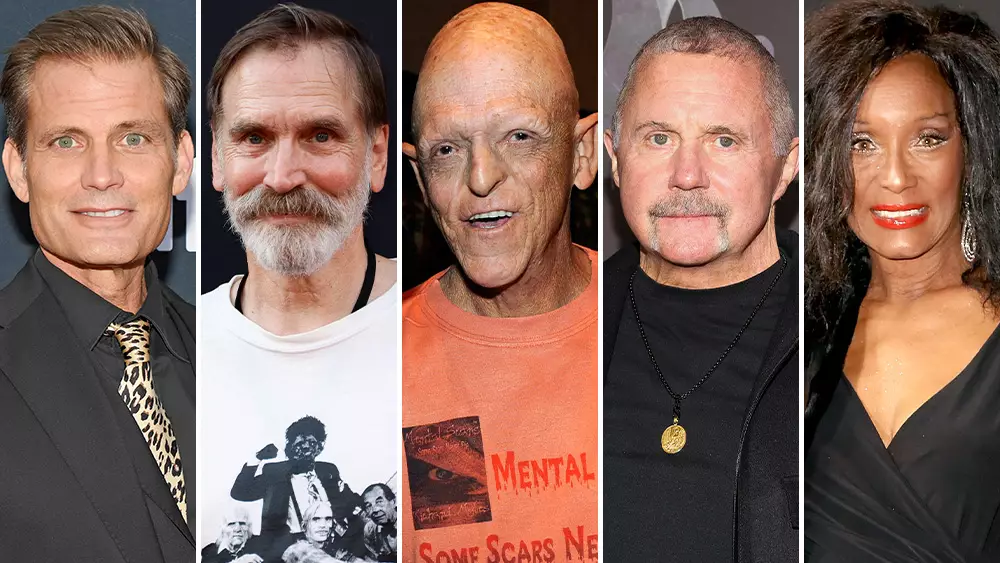The upcoming projects, “Spawn of the Living Dead” and “Organism 46-B: The Unseen,” signal a daring renaissance in the horror genre, blending nostalgic terror with innovative storytelling. Both films leverage the legendary roots laid by founders of iconic horror moments—such as George Romero’s Night of the Living Dead and classic creature features—to craft a fresh yet familiar experience. Unlike traditional blockbuster horror, these indie ventures emphasize gritty realism, practical effects, and creative storytelling, reflecting a renewed confidence among independent filmmakers to push boundaries.
What makes these projects stand out is their commitment to rekindling the primal fears that once defined horror. The zombie plague narrative in “Spawn of the Living Dead” revisits the chaos of society’s collapse but proposes a scientific approach to understanding the undead—a clever twist that fuses horror with intrigue. Similarly, “Organism 46-B” hinges on an icy, claustrophobic Antarctic environment, invoking primal fears of the unknown lurking beneath the ice. This shift away from cityscape carnage towards isolated, extreme environments underscores a desire to explore new territories within familiar genres, delivering psychological depth along with visceral thrills.
Collaboration of Horror Legends and New Blood
The cast assembled for these films demonstrates a deliberate blend of horror veterans and rising talents. Casper Van Dien, well-versed in sci-fi and action, brings a commanding presence to the zombie saga. Bill Moseley, a symbol of the genre’s raw, unfiltered gore, and Michael Berryman, whose iconic appearance embodies horror’s unsettling side, anchor the project with pedigree. Kane Hodder, synonymous with Friday the 13th’s Jason Voorhees, further cements the film’s serious horror credentials. Adding a touch of glamor is Trina Parks, a Bond girl whose presence signals an elevated production value.
This convergence of seasoned actors indicates a confident push toward elevating indie horror to new levels. It sends a clear message: independent films don’t have to compromise on talent or complexity. Instead, they can leverage experience and reputation for both authenticity and commercial appeal. Coupled with the fresh perspective of director Ani Kyd Wolf, known for her genre versatility, this cast exemplifies a strategic balance—combining familiar faces with innovative storytelling.
Behind the Camera: A Focus on Practical Effects and Creative Vision
The key to these projects’ potential lies in their dedicated use of practical effects and the creative vision of seasoned professionals like Todd Masters. His extensive background in FX, including work on “True Blood,” promises authentic zombie designs and visceral creature features that resonate more powerfully than CGI-heavy alternatives. The emphasis on makeup and physical effects signals a commitment to tangible horror that audiences crave—especially in an era of over-reliance on digital effects.
Furthermore, the choice to produce both films back-to-back at Lumostage Studios in Vancouver highlights a savvy approach to indie filmmaking. By shooting within a single studio and sharing cast and crew, the filmmakers reduce costs while maintaining a high level of quality. This strategy underscores how independent productions can emulate Hollywood efficiency, leveraging regional incentives and state-of-the-art facilities to compete above their weight class.
While the projects’ ambitious scope is undeniably exciting, a critical perspective reveals inherent risks. The independent landscape remains unpredictable—funding, distribution, and audience reception are constant hurdles. Relying on equity connections for financing, as Quinn-Barton states, could lead to unpredictable financial pressures or compromises. Moreover, shooting two films simultaneously demands exceptional organizational strength; missteps could undermine both productions.
Moreover, the reliance on genre clichés—like undead hordes and Antarctic monsters—while nostalgic, risks alienating viewers seeking fresh narratives. True innovation will depend on how effectively these familiar tropes are reimagined through storytelling, character development, and visual style. The challenge lies in balancing homage with originality—a formidable task for any filmmaker, particularly within indie constraints.
Finally, the emphasis on regional incentives and cutting-edge facilities should not blind filmmakers to the importance of compelling stories. Audience engagement is ultimately driven by characters and narratives that resonate emotionally; effects and settings serve as vehicles, not replacements, for genuine storytelling. The true test of these projects will be their ability to transcend genre conventions and deliver something both terrifying and meaningful.
These films symbolize a bold, calculated stride into a future where independent horror can flourish without Hollywood’s heavy hand. Yet, critical scrutiny reveals that success hinges on meticulous execution—balancing nostalgic homage with innovative storytelling and managing financial and creative risks. If these elements align, a new chapter of indie horror, driven by passion and ingenuity, could indeed revolutionize the landscape.
